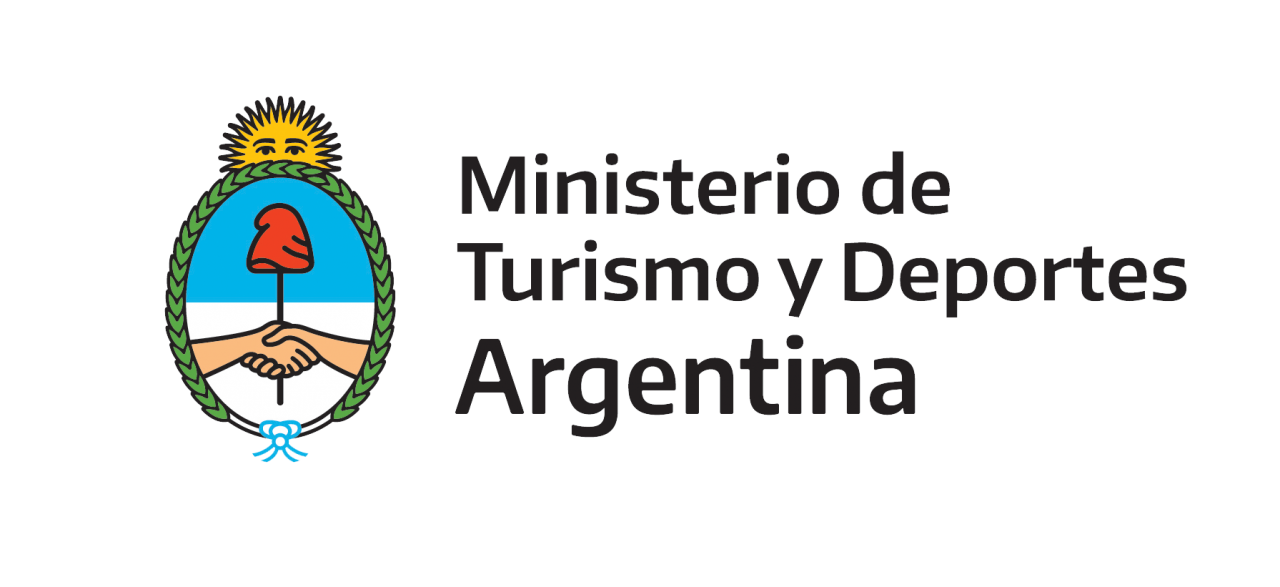History, nature and tradition
La Pampa, gateway to Patagonia Argentina, is a territory with a firm belief in its traditions, where its proud people are willing to share them with anyone who wishes to visit the province. In this circuit, we offer a walk through Argentine history getting to know the Ranqueles, an alternative point of view on different cultures like the Mennonites and of course a visit to the estancias which open their doors to visitors, allowing them to enjoy typical countryside activities and exquisite food.
The journey
Departing from the capital of the province, Santa Rosa, two different circuits which combine tradition, culture, history and nature are suggested.
Circuit 1
This trip departs from Santa Rosa with two different trips that can be combined between each other. The first of them, “Latidos del Caldenal. Por los pasos del ranquel…” (Heartbeats of the calden. On the path of the ranquel…), begins its journey in the capital city of the province by taking Provincial Route Nº 14 up to the touristic Estancia La Holanda, where it is possible to enjoy a country afternoon, sleep and visit the Atelier Museum Ortiz Echagüe, where travelers are welcome by the descendants of the Spanish painter and can enjoy its works. The circuit goes forward 55 km from there in Victorica, the first town of the province, home to the annual National Celebration of West La Pampa Ranching (Fiesta Nacional de la Ganadería del Oeste Pampeano) every February. The “Parque Indígena Leuvucó” is located at 25 km north of the town, on the Provincial Route Nº 105. It used to be the most populated centre of the region, with approximately 8000 natives, who lived around Leuvucó lake.
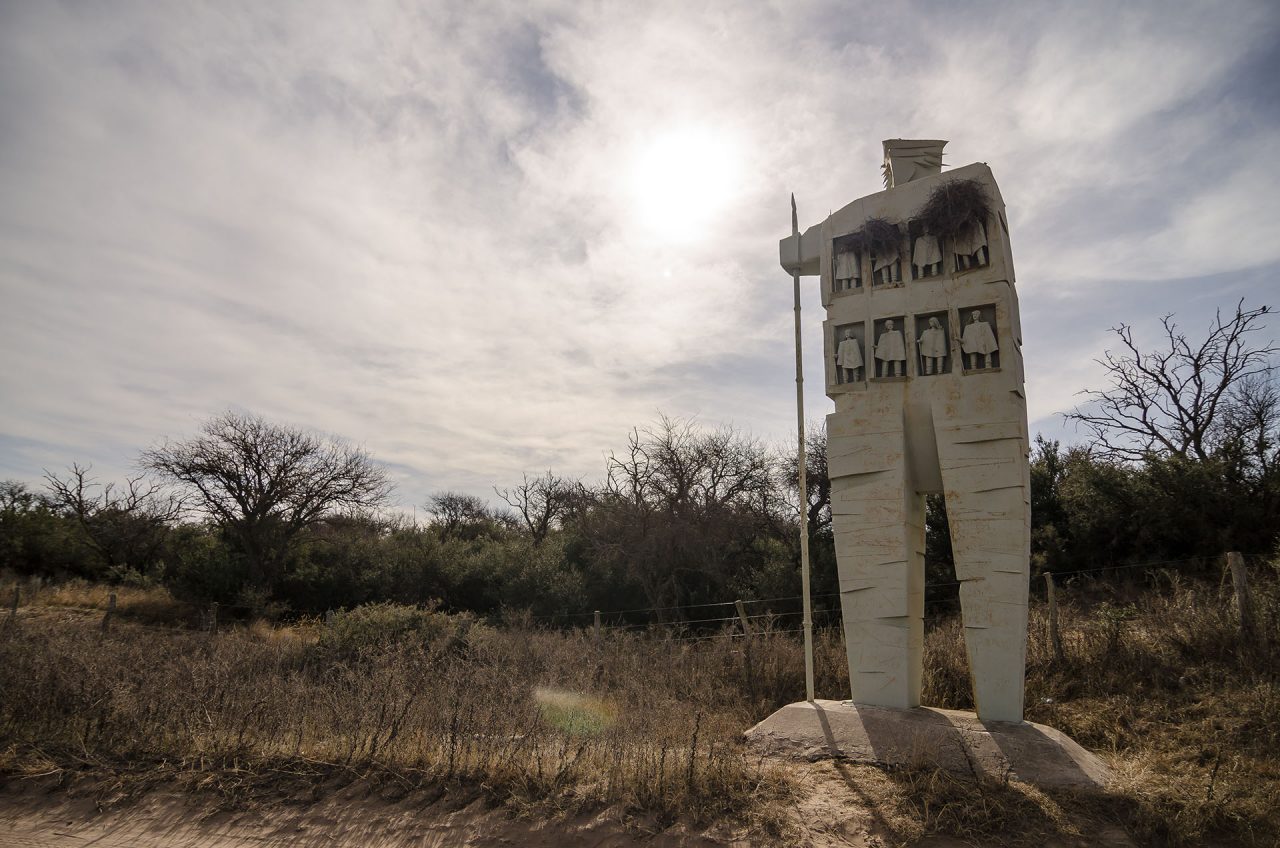
On the burying grounds, the remains of the last chief, Mariano Ranquel, and a monument in remembrance of Ranquel culture can be found. Every 24th of June the Ranquel New Year, “We Tripantü”, is celebrated, a day in which the Counsel of Lonkos (tribal chiefs) of La Pampa perform a ceremony of prayers.
If the traveler is still looking to continue the trip, it is possible to go back through Provincial Route Nº 10 and taking a detour on National Route Nº 35 to go into the area known as “Land of Cawell”. The first stop will be at Eduardo Castex – at 82 km from Santa Rosa – to visit the Prehistoric Park, in which a local artist created by hand prehistoric models, on a 1 to 1 scale, of the species that lived in the area. At 53 km down Provincial Route Nº102 we arrive to General Pico, where there are two must see attractions, the Maracó Regional Museum and the “Parque Recreativo Delfín Pérez” (Delfín Pérez recreational park).
Afterwards, the circuit continues on Intendente Alvear, where we suggest a visit to “La Casa de los Abuelos” Ecopark, an educational farm to enjoy its animals, native trees and other species, with accommodation and excellent services for tourists. This town is the birthplace of the finest polo in the world. Calm forests surround the fields of Chapaleufú Polo Club. Members of the Heguy family have developed their skills on this magnificent sport for years and nowadays captivate those who witness the matches periodically played in town. Another one of the attractions of the town is the National Taming and Folklore Festival, celebrated between the last week of January and the first of February each year. There are cultural and handcrafts expositions, as well as performances by notorious national folklore artists and riders. The next stop in order to have a reinvigorating rest and enjoy exquisite food is La Pampeana Rural Hotel – located in Sarah – which has an haute cuisine restaurant that has been awarded prizes several times. In order to have a total relaxation, a short trip to Bernardo Larroudé is very well worth it, where thermal baths can be enjoyed.
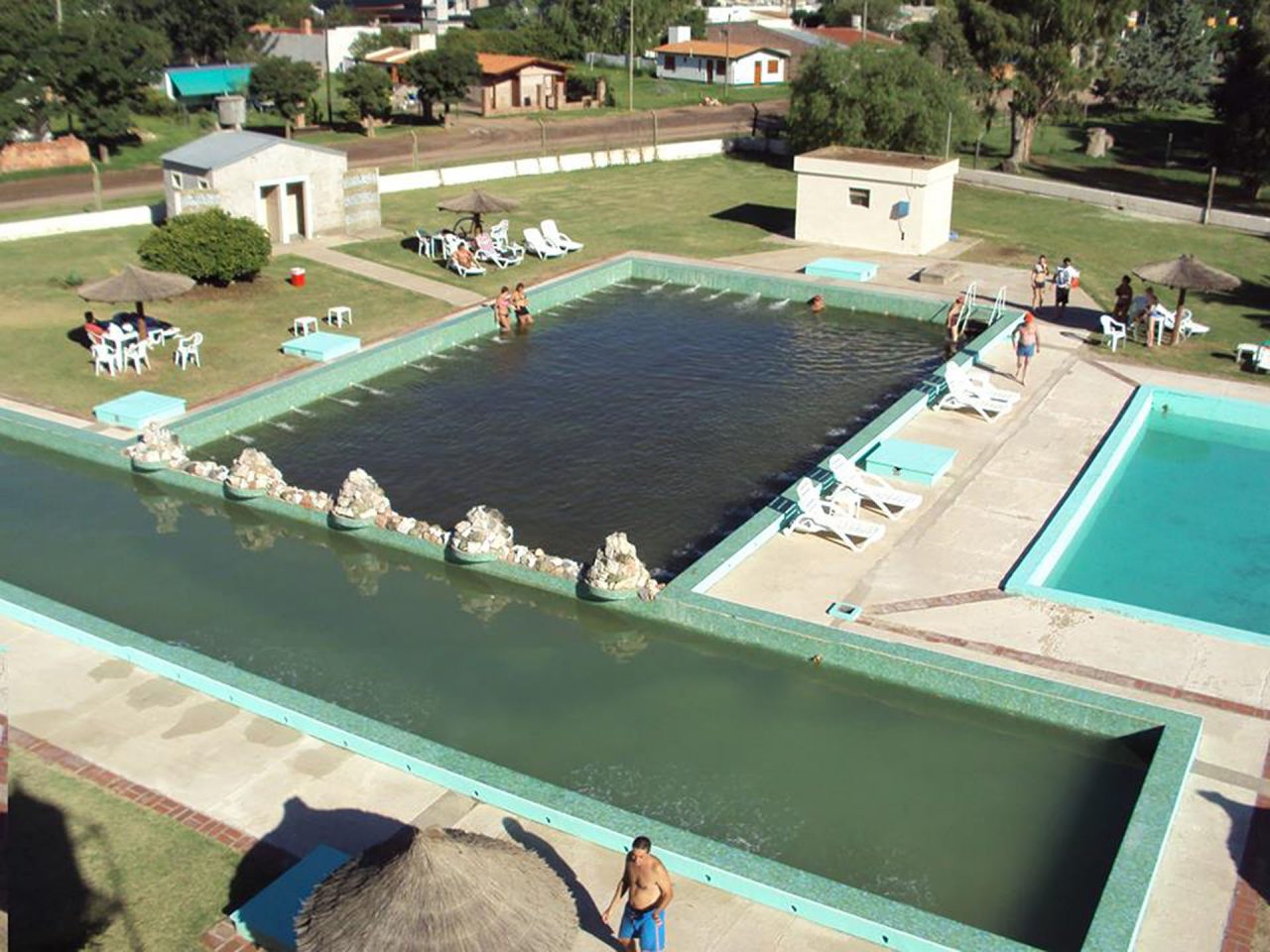
The Thermal Centre offers travelers different therapies to treat varied conditions of the skin and bones. The centre offers massages, sauna, hydro massages, mud baths, reiki, relaxation rooms and also open air pools with thermal waters.
Circuit 2
The trip begins in Santa Rosa, main urban and touristic centre of La Pampa province. In a visit to the city to the city, the most notorious locations are the Provincial Arts Museum, the Natural History Museum, the Spanish Theatre and the Cathedral, among other buildings and points of interest. Only 35 km along National Route Nº 35 are enough to be surrounded by nature in Provincial Reserve Parque Luro.
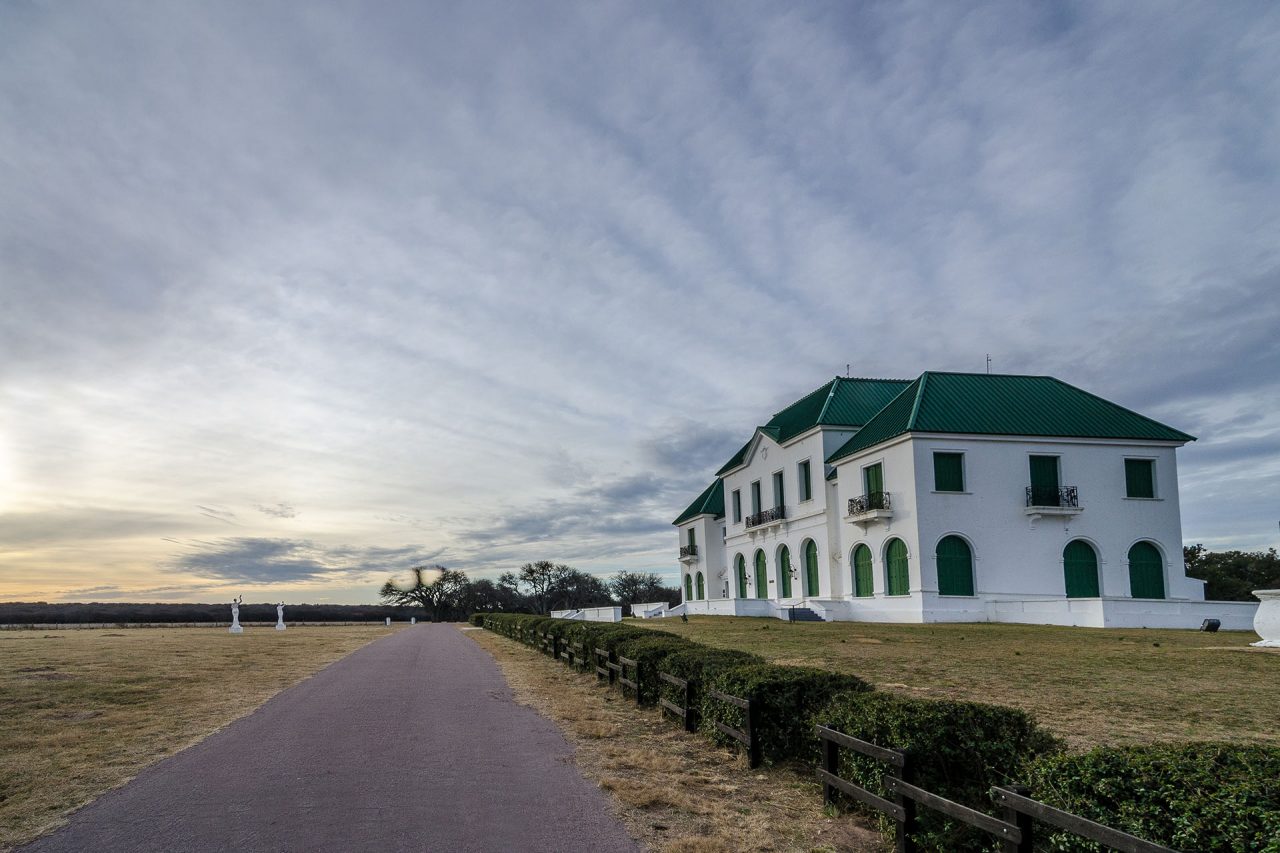
It is the greatest natural reservation of Calden in the world, which, along with the woods, dunes and lake represent the typical landscape of La Pampa. The reserve has 7600 hectares, 1600 of which are open to exploration. There, it is possible to admire nature on its greatest beauty, and share a paradise with the local flora and fauna. In its origins, around the eighteen eighties, influenced by the Belle Epoque, it was the largest hunting preserve in the world. Visitors will be able to do a guided tour through Don Pedro Luro’s (first owner of the preserve) residence, nowadays the “El Castillo” museum which is a Historic National Monument.
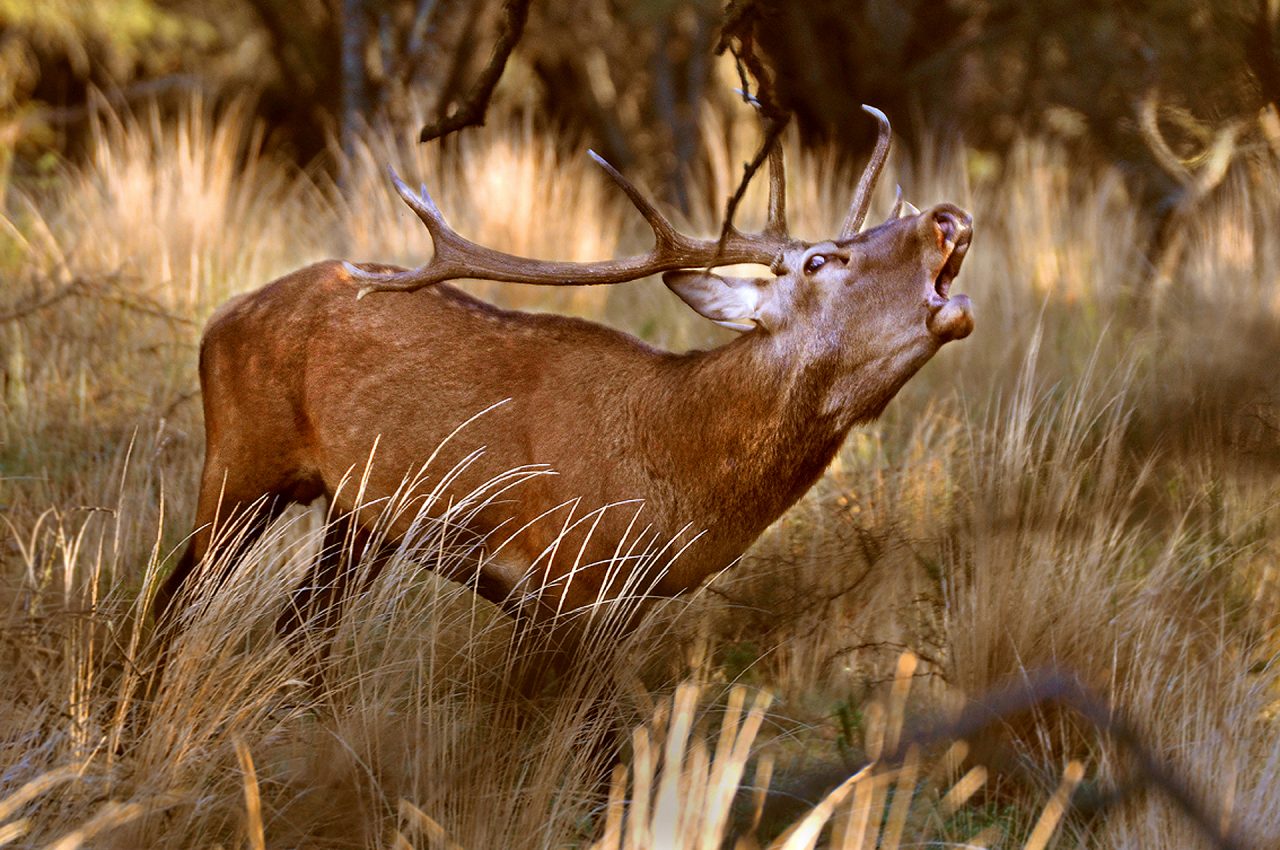
However, the stars of the preserve are red deer, which provide a unique natural event between the months of March and April when during rutting they move towards the area in which females are located bellowing. During this period, the alpha males will gather their harem in order to mate and will fight their rivals to keep it. It is possible to watch these majestic creatures in tours offered both at sunrise and sunset. The park provides accommodation in comfortable cabins, giving a total immersion in nature.
The next destination towards the “Roads of the Southwest Pampa” (Caminos del Sudeste Pampeano), at Provincial Route Nº 1, is Guatraché; where, for those interested in continuing their close contact with nature, the suggested activity is to visit the lake of the same name, a water body of 778 hectares and close to 40 hectares of beaches and salinas. It is ideal for mixing with nature, hiking, photo safaris, climbing the paths of the rocky peaks and reaching panoramic lookouts that allow the visitor a complete view of the entire lake. These activities may be done all year round and during the summer it is possible to enjoy the beach resort in Samuel Novick Recreational Park. The alternative for those who wish to know new cultures is the visit to the Mennonite colony; they have a very particular way of living and working the land, far from the comfort of modern life. The Mennonites keep their Dutch and German traditions, they live a simple life. Their main activities are dairy farming, woodworking, metalworking, making of clothing and preserves, building carriages, breeding of farmyard animals, growing their own vegetables and managing a general store.
The circuit comes to an end in the town of Jacinto Arauz, famous for being the town where Dr. René Favaloro lived and practised as a rural doctor. His steps may be followed visiting the Rural Doctor René Favaloro Historic Museum. One cannot leave Jacinto Arauz without visiting the salt lakes, “La Colorada Chica” or “Laguna Larga” (at 30 km south of the town) produces a great impact on its visitors due to the red colour of its waters, given to it by groups of small crustaceans called “artemia salina” which seem to dye the waters of a red tint. The accomplished effect is very special and extremely beautiful. Another worth seeing event is the gathering of salt between February and March.

